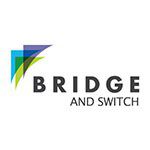Discover how users will accept your product early
Product myth: Great products are born in a lab.
Discovery: Many innovative ideas have sparked during experimentation in a lab or a Silicon Valley garage. Yet, experienced product teams understand customer research and organic market growth form the bedrock of successful products and market opportunity.
While product management is making decisions that will create a successful product, their also managing expectations and conflicting interests from stakeholders who all have different ideas for what the product should be at release.
This article will focus on using data to make product decisions when possible solutions are in conflict or when there is no optimal design solution. It will introduce some methods to help identify, define, and frame the right product problems for user testing.
Industry Insight:
Recall Apple’s Newton PDA – the industry poster child for technical innovations born in a lab that was rejected wholeheartedly by the market. Almost a decade before Blackberry would revolutionize personal assistant devices (PDA), Apple set out to put the power of a Macintosh computer in the pocket of the consumer. With innovative AI, handheld OS, and product design by none other than Jonathan Ive, Apple had everything they needed to be first to market.Yet, after ten years in the lab and $100M in engineering costs, user sentiment was so poor Steve Jobs canceled the entire program when he rejoined the company. Mocked and criticized in the media users despised the core “handwriting recognition” feature and high cost of switching from the Macintosh they knew and loved. Only one of the numerous design features of the product would cost Apple the market opportunity and force the company to pivot for another decade until the launch of the iphone and ipad.
The industry insight is that Apple introduced the product without incorporating user sentiment and concept tests into the product design. Even the marketing focused on technical innovations rather than educating consumers on how they would use it. Consumers rejected the company trying to change their behavior as some academic gesture served up as expensive hardware.
How do you make decisions informed decisions off the trade-offs that will resonate with your users? How do you then continue to build off user feedback that drives successful product outcomes? User testing is the clearest answer.
Product management will rarely inherit clear design solutions as part of any product release. Conflicting priorities, requirements, or timeline goals will always precede tradeoffs in the user experience.
Here are 5 possible user tests to consider during your product design and product launch.
1. Concept Tests
Whether you’re building a startup or maintaining an existing product with new features, user testing key product concepts help inform the user experience with your target users. Waiting to the last minute or once a build is complete before running your first user test is a high-risk strategy. While sometimes projects require last minute user testing to alleviate concerns, it’s still high-risk. The initial cost saving of not doing user research in the early stages never measure up to the cost you’re faced with a re-design, re-engineering and additional time to market.
2. Competitor Analysis
Conducting user tests against your competitor’s products enables a product team to access the product’s strengths, weaknesses, opportunities, and threats from a user perspective. The biggest assumption to avoid making is that your competitors have user tested their products. Assuming they are acting on the results from user testing is giving your competition the market they may not deserve. Comparing your own product against competitor tests can help you discover how users compare your products in the market.
3. Variance Tests
Product management has a long list of features that need to be evaluated. Stakeholders have their own lists, and everyone disagrees with what should be in the UI and which features should take priority. How do you decide? A user test focused on determining which functions and features are important for the user helps to determine what should be included, the priority of importance, user expectations of each feature, where it should be within the navigation structure and more.
4. Prototype Tests
Have you spent time in meetings debating what the UI should look like and where things should go? Have you felt this was wasted time? Designers and front-end developers have the capability to mock up early wireframes in a prototyping tool. This can then be tested with users, not internal stakeholders who have business agendas that often overshadow user preferences. A UX prototype provides the peace of mind that the product design is progressing in the right direction. If users respond negatively to it, it’s cheaper to make changes at this early stage where alternatives can be retested.
5. Test the Visual Design
Visual design evokes the first subjective response from the user for any product. The imagery, information hierarchy, poor readability, call to action (CTA), and other factors impact a product’s conversion rates as a direct response. If you’ve been user testing key features outside the product, it’s still important to test the visual design before product launch to understand how users will respond to the interface design. It’s a cheaper investment to make design changes before launch than finding later user has a problem with the design.
